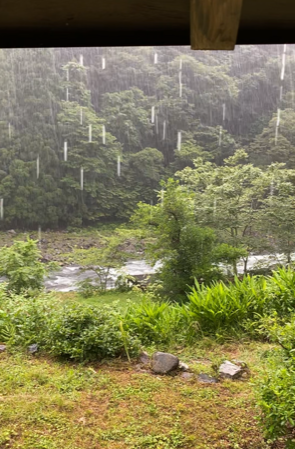Like many of you, living in Japan has meant I have a special relationship with the Hannya Shingyo (“Heart Sutra”), that one-page piece of writing that is said to summarize the teachings of Buddhism as taught in many sects, including Zen. In my student days, while studying Japanese Buddhism at Otani University in Kyoto, I attended several different meditation sessions at various temples, and the Heart Sutra was always part of the preliminary. I was quite jealous of the old-timers who could recite it from memory; now I have joined their ranks. I even translated it into English for a friend circa 1981 (sadly, I didn’t keep a record of it, so my translation is lost; it would have been interesting, now, to know how I viewed the Heart Sutra at that time).
Broadly, this little sutra can be divided into two parts: the first part which is the core teaching, and the second part which extols the power of this teaching to neutralize fear and bring the practitioner to the highest degree of enlightenment. It ends with a Sanskrit mantra, which plainly expresses the feeling engendered by meditation upon it. In the inimitable translation of Ruth Ozeki in her novel, A Tale for the Time Being (Penguin 2013):
Gyate gyate hara gyate Hara so gyate bodhi sowaka Gone, gone, gone beyond, Gone completely beyond, awakened, hurray

This experience I wrote about in my most recent blog post, “What Does it Matter?” Briefly, my idea was that you can’t divide the universe into things that matter and things that don’t, because as human beings, our experience is not great enough to make pronouncements like this. For example, one might say, this living creature is annoying me, therefore it doesn’t matter and I can kill it, but I wouldn’t kill a different living creature because “it has a right to live”. My belief is that everything matters, and what matters most is our attitude toward what we experience. I also explored the tendency of human beings to judge and evaluate everything based on their own particular set of senses, which everyone would agree, with a little thought, is very limited – even with the addition of science, which is basically a very well-organized and tool-based enhancement of these senses. Animals, plants, and yes, inanimate objects, have their special way of feeling and experiencing themselves and the world around them, which is not the same as human senses; some creatures we would compare with ourselves and say their senses are “better” than ours, e.g. the eagle’s eye or the dog’s nose. Many we would, in the same way, say they are inferior to ours (especially in “sentience”, which when you think about it is a very slippery concept indeed).
Thus far, it is well known to many people, both foreign and Japanese. I would like to share an insight I had about this while staying recently at a mountain pension on a rainy weekend.
The things of the material world, as they present themselves to our senses, are what is meant in the Heart Sutra by shiki 色. Then there is the world beyond our senses, which in Buddhism is represented by ku 空. This is usually translated “emptiness”, which sounds very Buddhist, and is the traditional way to translate this word, which is also the Japanese word for “sky” (sora). I myself prefer something like “potential”, because whatever that state is, it doesn’t feel “empty” to me. In the Heart Sutra it is written, shiki ku i fu ku fu i shiki 色不異空空不異色 (“Emptiness does not differ from the material world, and the material world does not differ from emptiness.”) and also shiki zoku ze ku ku zoku ze shiki 色即是空空即是色 (“The material world is itself emptiness, and emptiness is itself the material world”) These translations are from Alex Kerr, Finding the Heart Sutra (Penguin 2021). To say the material world is emptiness, or to say that emptiness is the material world – these two statements engender opposing images of what the Universe is like, either so closely packed as to be completely full, or free and empty as floating clouds, which images themselves cannot be thought of as separate from each other.
What hit me about this is that the whole question of whether things matter or not, and which ones do and which ones don’t, which we human beings deal with on a daily basis, becomes moot. For us to base our lives on what our own senses tell us of the material world is to limit ourselves. There are always different beings, different senses, different levels; though it is inevitable (what else are we to base our experiences on?), it is admittedly rather arrogant to use ourselves as a basis for comparison to the entire rest of the universe. The Heart Sutra goes on to say that the senses themselves, as well as our physical sense organs and the objects which seem to generate our sensory feeling (these three are clearly delineated in Buddhism), are non-existent (mu 無).
The Heart Sutra, especially the lines I quoted above, cuts through all that. The material world as we experience it is no different from the world outside our senses! They both exist at the same time and we are free to experience both! They are so close together that there is no separating them. Any attempt at separation, that cruel lie which ensnares humanity, falls away meaningless. This universe of ours, seemingly so close-packed and at the same time free to dissolve and fly away free as a bird, this is our home. We can’t, and shouldn’t, limit ourselves.
Much has been written about “enlightenment”, but I will only mention the old Zen proverb, “Before enlightenment – drawing water and carrying wood. After enlightenment – drawing water and carrying wood.” (Some versions say, “chop wood and carry water”, but this is the version I learned.)What the Heart Sutra seems to be saying is, enlightenment is the same as these little everyday tasks. We may get a flash of insight from time to time, as I did when gazing out the window at the rain in the mountain pension, but we can’t live there, in the eternal “emptiness” beyond the senses. We must come back to the material world and do the little tasks – maybe with a changed and chastened spirit, but the tasks remain to be done. This is where we live. But the emptiness, the large mind, the big picture, is always there to refresh us when the material world becomes too overwhelming with all its small pieces and demands.
If everything matters, then both the material world and the world beyond the senses matter equally. We must live in both and acknowledge both. Recently I re-watched the movie, “The Razor’s Edge”, which starred Bill Murray, from the book by W. Somerset Maugham. Larry, the main character, felt the pull of the material world, and also of the spiritual realm he was studying in his travels. He was determined to see that they are inseparable and both matter, which was not the view of the people that surrounded him. This is the true Razor’s Edge, I thought. Walking on the fine line between the material and the spiritual, and the realization that they are both the razor – they both are part of the same enormous thing.
***********
Rebecca is the author of three books: At Home in Japan (essays, Tuttle 2010), My Awesome Japan Adventure (children’s book, Tuttle 2013) and The Mad Kyoto Shoe Swapper (short stories, Tuttle 2019). All are illustrated by the author.
To learn about Rebecca’s artwork, see this page.
For the report of a lunch talk by Rebecca, click here.
